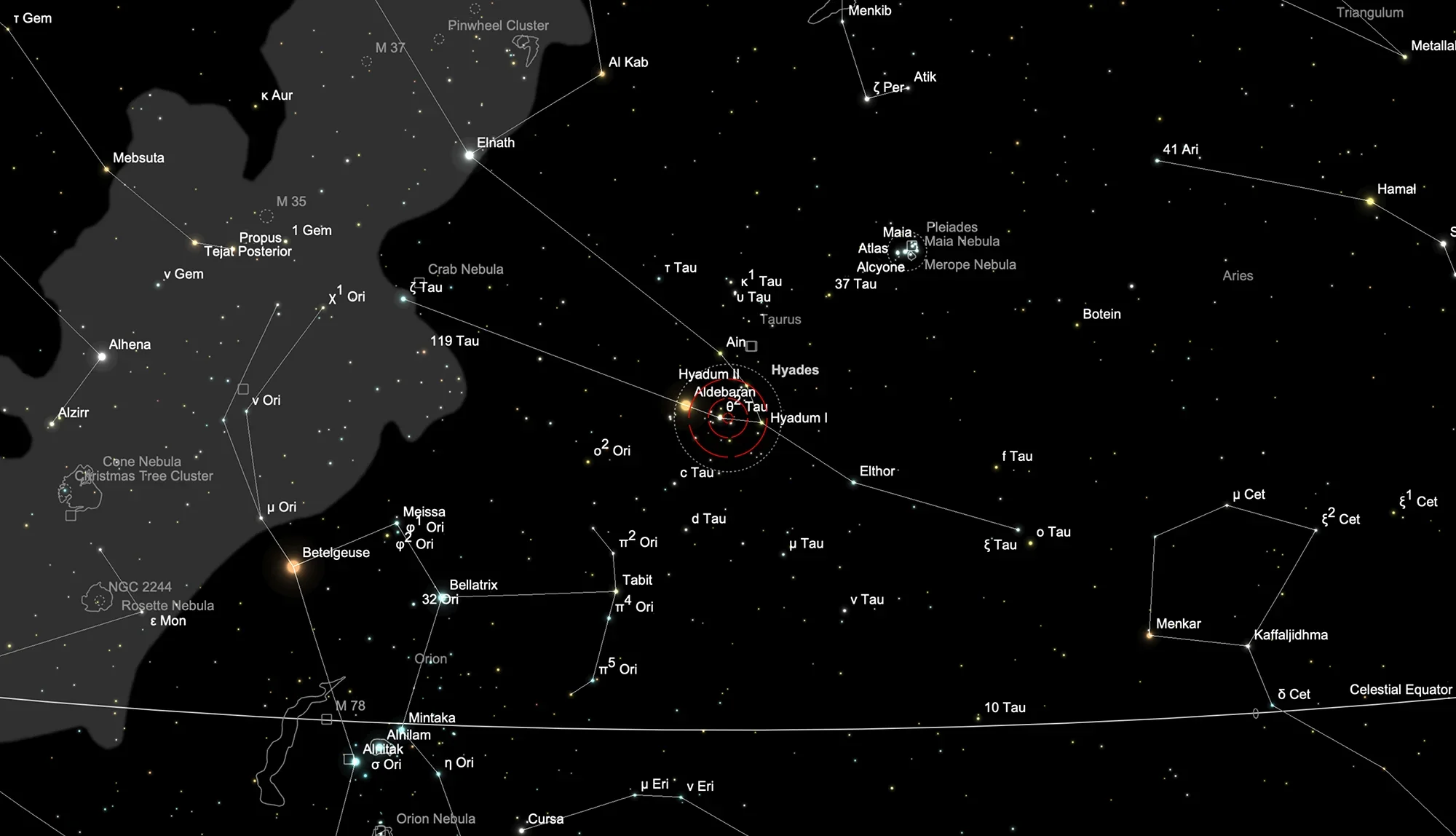Hyades (Mel 25)

History
For millennia, the V-shaped cluster known as the Hyades has held the designation as the Head of the Bull, with the reddish star Aldebaran (α Tauri) serving as the Bull's Eye. In ancient traditions, the Hyades were linked to wet and stormy weather, a connection reflected in the name derived from the Greek word meaning «to rain». According to Greek mythology, the Hyades were the daughters of Atlas and Aethra, sharing a familial bond with the Pleiades as half-sisters. [4]
In 1915 British astronomer Philibert Jacques Melotte published a catalogue of Star Clusters shown on Franklin-Adams Chart Plates, a photographic star atlas prepared by John Franklin-Adams and published in 1914. The catalogue contains 245 clusters and the Hyades are listed there as number 25, hence the designation Mel 25 (or Melotte 25). [158]
A less used designation is Cr 50 (Collinder 50), from Per Collinders catalog of open galactic clusters, appeared in 1931. [455]
Physical Properties
Aldebaran is located at a distance of approximately 20 parsecs and is not considered a true member of the Hyades cluster, which is estimated to be at a distance of 45-47 parsecs. It is an evolved star, specifically a red giant of spectral type K5 and luminosity class III, with an age of around 10 billion years. While its mass is estimated to be 0.9 solar masses, it has expanded to a radius 44 times that of the Sun.
In the early 1990s, radial-velocity variations were initially reported with a period of approximately 629 days. It was suspected that a substellar companion, several times the mass of Jupiter, might be the cause. However, recent analyses suggest that oscillatory convective modes could provide a plausible alternative explanation for the observed radial-velocity variations. [156]
The Hyades appear to be one of the closest galactic clusters, with the exception of the Ursa Major moving group. The central cluster has a diameter of approximately 8 light years, constituting the nucleus of a more extensive assembly known as the «Taurus Moving Cluster.» This larger group is a loosely aggregation containing numerous fainter members scattered across a significant portion of the constellation. The entire cluster is gradually drifting through space towards a point a few degrees east of Betelgeuse in Orion. The Taurus Moving Cluster was at its closest proximity to the Solar System approximately 800'000 years ago. [4]
Finder Chart
The open cluster Melotte 25 is visible by naked eye as a V-shaped cluster forming the bulls head of the constellation Taurus and includes the bright red star Aldebaran (α Tauri). The best time to observe is July to May, when the constellation Taurus is highest at night.
